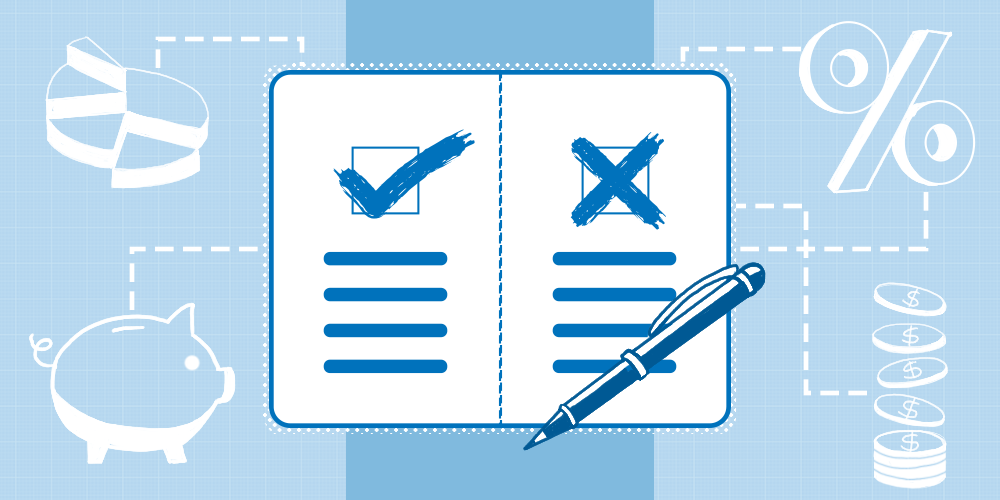When it comes to managing your finances, chequing and savings accounts are important accounts you can leverage.
What's the difference between chequing and savings accounts
Here's a quick rundown of the general purpose of each account:
- A chequing account is a safe and easy way to handle your daily and monthly spending needs. Best suited for you to deposit your paycheque and pay monthly bills and daily expenses like groceries or gas from.
- A savings account is where you deposit money you want to save rather than spend. Your savings goal might be to build an emergency fund, or save for a vacation, wedding or home renovation. It pays interest, allowing you to grow your money over time.
Since each type of account has pros and cons and most people use them for different purposes, most Canadians have both chequing and savings accounts.
How to choose the right chequing account
When picking a chequing account, you'll want to take a detailed look at your monthly spending habits and needs, the minimum amount of money you plan to have in your account, how many transactions you make a month, as well as any fees you're willing to incur and additional features you may need.
For example, a basic chequing account might have a low monthly fee, such as $1.99, but has limits on how many transactions you make per month. If you go over, you'll be charged each time you make a withdrawal, pay a bill or send e-transfers. In this case the account with the lower monthly payment might not be worth it for you.
A premium chequing account that has a higher monthly fee ($25 per month), might save you more money if you keep a higher monthly balance that waives the fee or you make a lot of transactions every month.
Your bank might also have special accounts for your life stage. Plans for youth (up to the age of 16, or between 17 and 25) could have a waived monthly fee, or more free transactions than other plans. Senior plans for those aged 60 and up can include perks too, like waived monthly fees and unlimited transactions.
Other features to consider include:
- E-transfer cancellation fees
- ATM fees at other institutions in Canada and the U.S.
- In-branch bill payment fees
- Fees for paper statements
- Personalized cheque fees
- Discounts or credits on other features such as credit card fees, mortgage appraisal fees or safety deposit box costs
How to choose the right savings account
There are numerous options when it comes to savings plans, so it’s important to evaluate your savings goals and compare your account options. If you're building a short-term emergency fund and plan to make frequent withdrawals or transfers, consider a personal savings plan that offers a slightly lower interest rate but includes unlimited transfers. If you’re looking at a slightly more long-term savings goal, such as a vacation, you might choose a premium savings account that has higher interest to grow your savings faster. And don't forget that registered investment plans are available for your more focused, long-term savings goals like retirement or buying a home.
For more information about the various chequing and savings accounts that Servus offers visit the accounts page.


